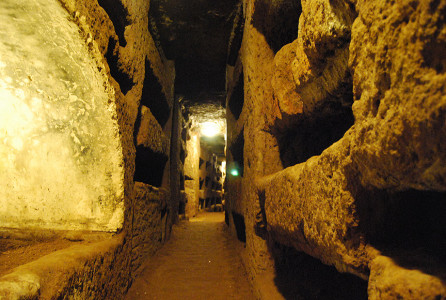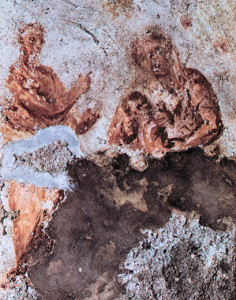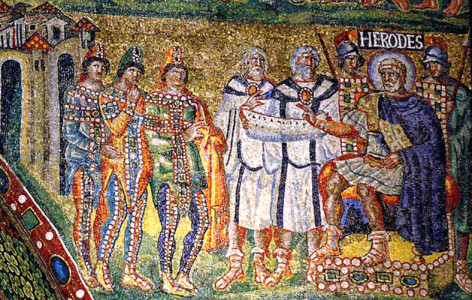This site is still under construction in some areas. Please be patient with our glitches!

Did you know that most of the very early “Christmas” art that has survived into the present is in the catacombs around Rome?

Perhaps the earliest known Christian painting is a simple 2nd century portrayal of the Annunciation, on the dome of a tomb in the Catacomb of Priscilla. But dating wall paintings is an inexact science at times, and many believe the paintings at Dura Europos to be earlier.

A painting of the Madonna and Child in the same catacomb complex has been dated to the late 3rd century. These paintings were done in the popular Roman style of the time.
Much of what remains of early Christian art has been discovered in these catacombs, which were used primarily from the 2nd through the 8th centuries CE. They were closed in the 9th century, mainly because of repetitive destruction by invading Goths and Lombards.
Crosses were not common among the earliest symbols. Instead, the Chi Rho, Good Shepherd, fish, anchors, alpha and omega, and praying figures known as “orants” were typically used to decorate tombs. The Good Shepherd in particular was also a common symbol for pagan Roman burials.

Not until after 313, when the Edict of Milan made the practice of Christianity legal throughout the Roman Empire, did Christian art become more public, and eventually, more complex. The Magi with their gifts was a favorite theme in the 4th and 5th centuries, as was the Annunciation, the angels singing praises, and the Virgin and Child; however, Mary was most often portrayed solemnly, seated on a throne with the child in her lap.
There has been some discussion about whether the arrow-like symbols in the painting below of Jesus with Peter and Paul might also be angels.
After the first millennium artists began to “humanize” the nativity, adding details to the scene and softening Mary’s appearance. Finally, by the 1300’s the classical paintings we’re familiar with today began to emerge.
Interestingly enough, the first portrayal of Jesus on the cross didn’t appear until sometime between the 6th and 8th centuries.
.
.